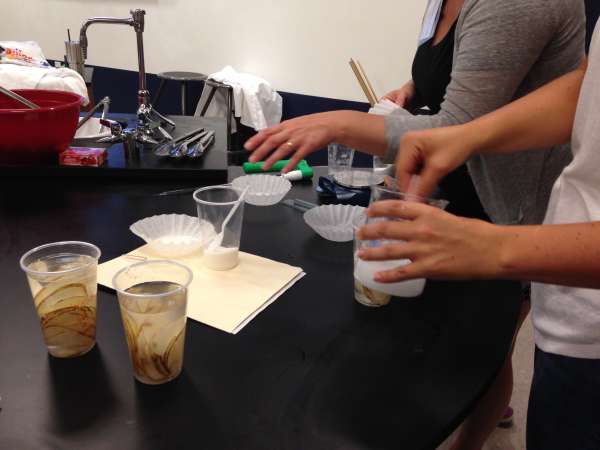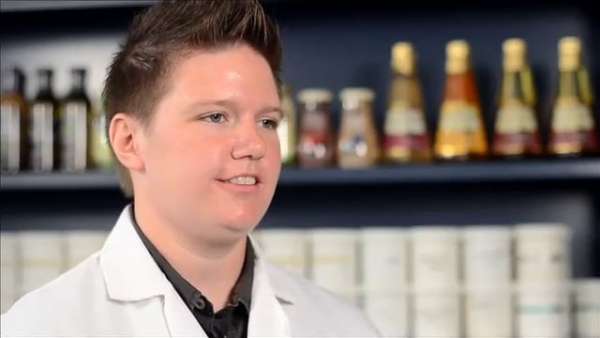Soy in food: What is that doing in there?
Lessons
# Macromolecular composition of field crops
Students evaluate corn, soy, and wheat on the basis of starch, lipid, and protein content and associate the variability in results with the functional roles of these crops as ingredients in food/feed.
Files
# Why is soy in so many foods?
Students make tofu from soymilk, cheese from milk, and baked goods with or without the use of soy lecithin. This lesson will allow students to initiate protein coagulation through acid hydrolysis and evaluate the impact of soy lecithin on product quality.
Files
# Shelf life extension and preservation
Students test the impact of water availability on the shelf life of soy-based foods and recognize the correlation and associated principle between shelf life and water activity, then experimentally evaluate the impact of processing and formulation changes which impact water availability and in turn, shelf life.
Files
# Fermented foods
Students discover the practical reasons for the regional production of various fermented foods, and setup and evaluate their own natto fermentation. After completing this lesson, students can explain the effect of microbial fermentation on food safety, preservation, and sensory appeal.
Files
Teacher background
The major macromolecules associated with foods are carbohydrates, lipids, and proteins. Soybean composition makes it a desirable ingredient in many foods (Lesson 1). The high protein levels in soybeans have made them important staples in vegetarian diets and in regional cuisines where access to animal protein has been historically limited. Students will find similarities in the processing of tofu and cheese based on the structure-function of proteins in soy and dairy. Soy also plays a major role in many foods due to lecithin, a cost effective emulsifier in foods (Lesson 2).
When considering the variety of soy-based foods that are available, students will be asked to note the differences in shelf life based on processing and formulation. In addition to the macromolecules, water is another major component of foods and a significant indicator of shelf life. Therefore, a correlation exists between shelf life and water activity so that changing the availability of water in a food will limit the ability of many spoilage microorganisms to grow (Lesson 3). Another method of shelf-life extension is fermentation wherein the growth of fermentative organisms leads to the production of metabolic byproducts (acid, ethanol, flavor compounds) that contribute to food’s sensory appeal, safety, and preservation. In this final activity, students will create a fermented soybean product, natto, that has significantly different attributes then unfermented soybeans and which has been consumed as a regional source of dietary protein (Lesson 4).
It should be noted that in the field of food science, the majority of experiments and activities are not destined for consumption by the scientist. Therefore, none of these activities produce food for students to eat. This is most important if the teaching space in not a food safe area, because allergies exist, and, in the case of Lesson 4, because fermentations which are not well controlled can lead to the outgrowth of pathogens.
Authors
Abigail B. Snyder
Ph.D. Student, Cornell University
Department of Food Science
Charles T.C. Day
Research Technician, Cornell University
Department of Horticulture
Next gen science standards
Science and engineering practices
- Asking questions (for science) and defining problems (for engineering)
Crosscutting concepts
- Patterns
- Cause and effect
- Structure and function
- Stability and change
Disciplinary core ideas/content
- LS1A Structure and Function
- LS1B Growth and development of organisms
- PS1B Chemical reactions
- ETS2 Links among Engineering, technology, science and society
- ETS2A Interdependence of science, engineering and technology
- ETS2B Influence of engineering, technology and science on society and the natural world





Share this